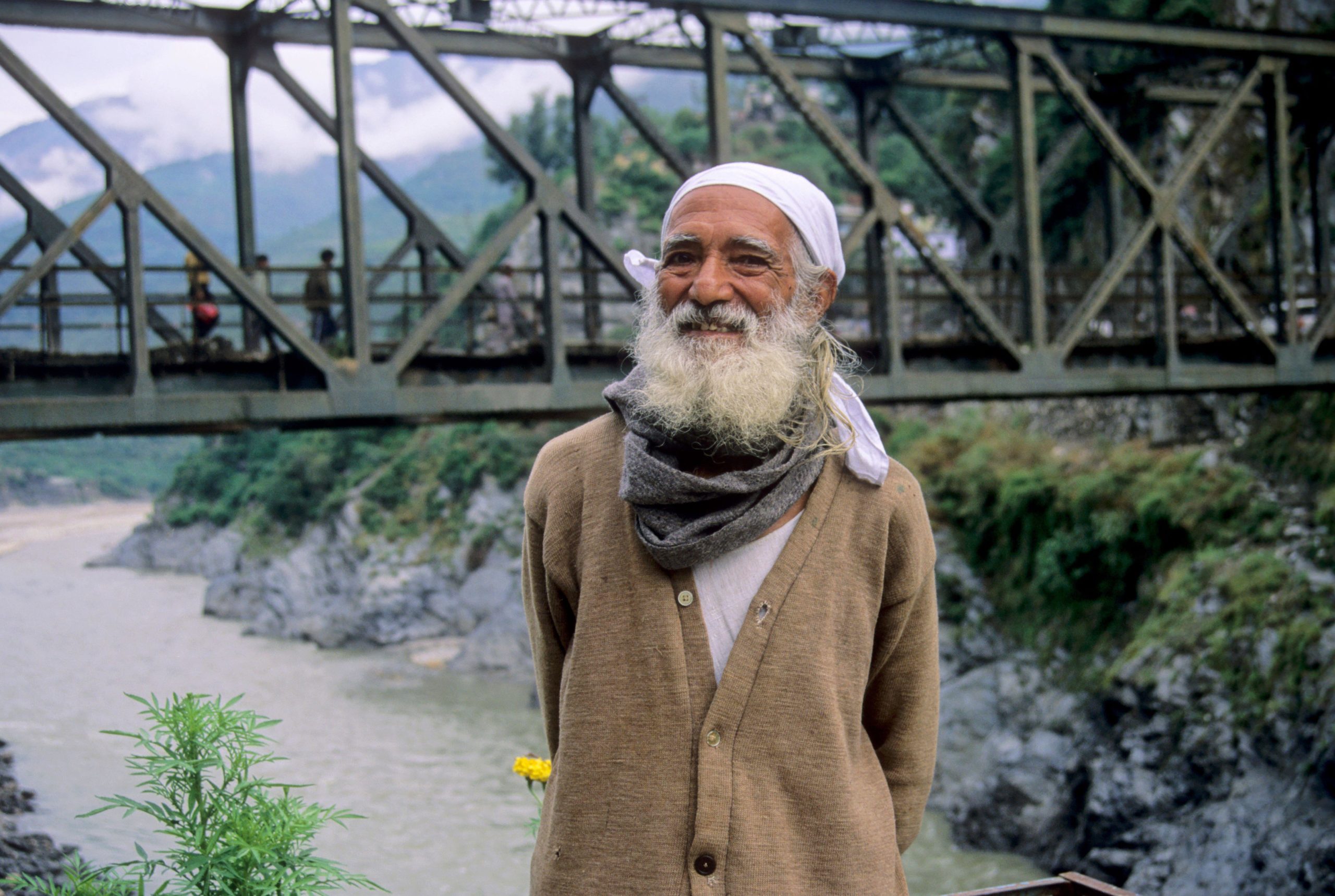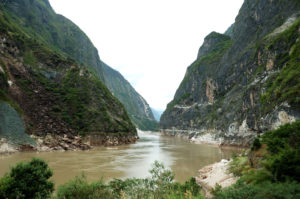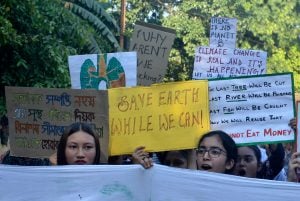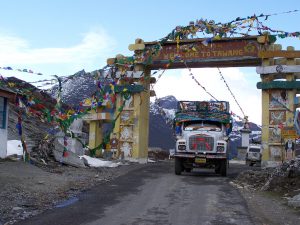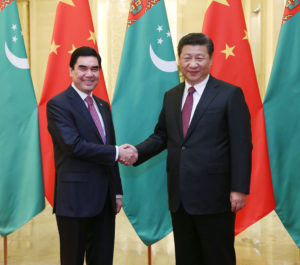Many eulogies have poured in after Sunderlal Bahuguna, 94, died of Covid-19 on 21 May. Official tributes carefully skirt around the core of his lifelong struggle to save the Himalayas from logging and short-sighted ‘development’ policies. Others refer to his futile attempts to stop the construction of the Tehri dam in Uttarakhand state. Few acknowledge that this broke his heart.
Born in Maroda village near the town of Tehri in the Himalayas, Bahuguna’s struggles started in his teenage years, against what was then the kingdom of Tehri in British-ruled India. He was forced to flee to Lahore and was exiled from the kingdom for having supported the agitation for democracy.
After India’s independence in 1947, Bahuguna spent years working against untouchability and alcoholism in the villages of Uttarakhand. When the famous Chipko movement started spontaneously on 26 March 1974, he was the man who spread the word nationally, then globally.
Chipko literally means ‘hug’. The movement was started by a group of women in the Chamoli region of the Himalayas to save trees from loggers. The women did this by hugging the trees. Their struggle was quickly taken up by the environmentalist Chandi Prasad Bhatt and given a voice by Sunderlal Bahuguna.
Bahuguna was indefatigable in his efforts to amplify the Chipko movement. He spoke to everyone, from activists to school groups, college groups, journalists, politicians, business leaders and so on, always firm in his messages that deforestation in the Himalayas was simply not acceptable, that local residents were the best guardians of forests, that South Asia could not be saved unless the Himalayas were saved, that the economy was a part of the environment and not the other way.
He walked from village to village in the Himalayas to spread his message, and went all over India to do the same. The success of the Chipko movement was not only to save the forests around the villages where the movement started, but to make the whole country aware that there were lots of problems with the prevailing development model. The movement led to the passage of nationwide laws that made logging very difficult, including a total ban on felling trees above an altitude of 1,000 metres.
National attention came with problems of centralisation
The transformation of the Chipko movement into a national, and even international, cause had negative repercussions as well. The movement was part of a longstanding struggle against rampant commercial deforestation for commercial gain by outsiders. The people in the region were angry, both at contractors from outside the region bringing in foreign labour to fell trees, and the damage that was left behind. It was, therefore, both a labour movement and an ecological movement. The transition to only an environmental movement highlighted only one aspect.
The national attention that the Chipko movement received led to the government tightening control. While contractors from outside the region became less of a problem, the loss of livelihoods to people from the region was severe. Ironically, the very demonstration of people’s attachment to their local ecology was used by centralised decision-makers to alienate them from it. This was because Indian forest laws – like the logging practices – were based on the British colonial practices that ignored the local populace. For example, the creation of the Nanda Devi Biosphere Reserve came with such restrictive legislation that locals could no longer collect herbs from the area.
The Tehri dam struggle
Despite such issues, Chipko was a success in getting the government, both at the regional and national level, to pay attention to environmental concerns in the Himalayas. The movement to stop the Tehri dam marked a defeat. Activists and independent experts repeatedly pointed out that a large dam high in the Himalayas would displace thousands of people, be a serious risk in the event of an earthquake in this seismically active area, would drown forests, lead to significant emissions of methane – a greenhouse gas – and would deprive local communities of access to traditional water sources.
Bahuguna and his wife Vimla Devi led the struggle. Bahuguna went on a 45-day hunger strike that he called off after PV Narasimha Rao, then prime minister of India, promised the formation of a review committee to investigate the dam project. Nothing came of it.
Bahuguna went on a 74-day hunger strike at the memorial of Mahatma Gandhi in New Delhi. HD Deve Gowda, then prime minister, promised another review committee. Nothing came of that either, except that such repeated and prolonged hunger strikes had serious and long-term impacts on Bahuguna’s health.
With other activists, Bahuguna went to court. It was all to no avail. The government had two arguments: India needed electricity and the national capital Delhi (over 300 kilometres away) needed water. Over a period of more than six years in the 1990s, the government bulldozed civil society opposition. Its arguments won the day in court.
Tehri dam is the highest in India, located on the Bhagirathi river, the main tributary of the Ganga. The 260.5-metre-high dam is made up of rocks, with soil in between. With a span of 575 metres, it stretches from one hillside to another, blocking the river completely. The reservoir thus created is spread over 52 square kilometres and holds 4 cubic kilometres of water. It has an installed capacity to generate 1,000 MW of hydropower, with an additional capacity of 1,000 MW through pumping water to a height. The dam is also meant to provide flood protection, irrigate 270,000 hectares and supply 1.2 million cubic metres of water a day to various cities, mainly Delhi.
When work on the Tehri dam resumed in 2001, Bahuguna was promptly arrested, even though then-Prime Minister A.B. Vajpayee had expressed sympathy with Bahuguna in earlier decades.
An inspirational figure still
Sunderlal Bahuguna continued to speak about the importance of saving the ecology of the Himalayas; he still spoke to whoever would listen. He was still a role model to generations of environmentalists, he still energised school and college students, he was still seen as a father figure by thousands of Uttarakhand residents.
The smile remained the same, Bahuguna retained his ability to remember old acquaintances and to mix easily with everyone. But those who had known him from the 1970s and 1980s could see that the old spark was dimmed, the eyes did not sparkle as brightly.
When Bahuguna was infected with Covid-19 in early May, his broken health led to early onset of pneumonia. An associate said just days before Bahuguna’s death, he had told Vimla Devi not to mourn him but to carry on with the struggle to save the Himalayas.
